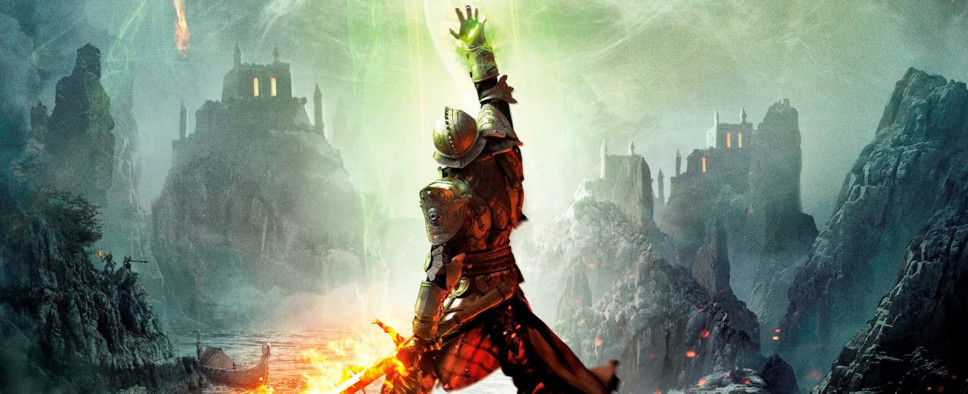Dragon Age: Inquisition Interviews
-
Category: News ArchiveHits: 3744

The game's length, its technical make-up, and the way BioWare tried to balance the wants of the fanbases of its two prequels are some of the subjects that are covered in the Dragon Age: Inquisition interviews we have rounded up for this newspost.
VG247 talks about the PS3 and Xbox 360 versions of the game and its art direction with director of art and animation Neil Thompson:
(We've probably pushed them further than we ever have before,) Neil Thompson, director of art and animation at Bioware told VG247. (When you're trying to take a gen 4 experience and put it on a gen 3 console without compromise then by necessity you're pushing those consoles really hard.)
(It's tough,) he added. (We want people to have the same satisfying experience no matter what platform they play it on. From a graphical perspective the gen 4 versions look more dense, but in terms of the aesthetic of the game they should be the same across platforms.)
...
(Frostbite allows us to do much more,) details Thompson. (One of the prime sources of inspiration for Dragon Age: Inquisition was the work of Northern Renaissance artists. We've seen the introduction of Frostbite as the semi-Renaissance of BioWare in terms of the visual art.
(It's a threatening world, there's lots of danger and the threat of doom and gloom. But that shouldn't alter the fact that it can still be beautiful. We really wanted to introduce a much more colourful and rich environment than we saw in Dragon Age II.)
Producer Cameron Lee throws some impressive game length figures at Polygon, though developers' estimates tend to be wrong so I'd suggest to not take them at face value:
Dragon Age: Inquisition will take players between 150 and 200 hours to complete all content, according to BioWare producer Cameron Lee. Dragon Age games have always been long, meaty affairs, but the world has changed since the release of Dragon Age 2. Does BioWare think players who are a few years older and, more than likely, have more life responsibilities will come back to spend more than a full week's worth of time playing one game?
...
"People could burn through it and just do the main path, but we wanted to have a world that's fully immersive and well-defined for you to explore, discover and get involved in," Lee said. "We want you to see you decision have an impact and take shape in the world.
"We're just making more. More and more and more. And it's all entirely up to the player. It's your world, your game."
GamesBeat talks with general manager Aaryn Flynn about technology and performance:
GamesBeat: What was that experience like working with a new engine for a team that tends to make such huge, expansive games?
Flynn: It was fantastic. It's funny, because we didn't know what to expect. We did a bunch of research into the engine four years ago now, even before Dragon Age II shipped, as we were deciding what our technology strategy was going to be for the next five to ten years. We did that work and then we went in with both feet and said, (Well, the best way to make use of this is not only commit all of our titles to it, but then also to work with the teams directly to offer our suggestions and focus on the things that we need to do to make our games good.)
With the Frostbite team handling a lot of the heavy lifting around core rendering loops and specific stuff around the platform, we focused on the RPG elements and the things we need to do to extend Frostbite to make our first RPG, Dragon Age: Inquisition. That was everything from updating the animation system to support quadrupeds everything from horses to dragons to putting pauses in the game. Frostbite had no notion of a pause before that, so we had to put pause in. There were all sorts of things that an RPG needs and we focused on getting those into the game. As we went on we learned the core internals of the engine as well, so we could do the best optimizations possible. We did most of those on this game as well.
GamesBeat: Did the technology enable BioWare to do things that it's always wanted to do, especially in terms of enabling new kinds of gameplay?
Flynn: For sure. The two big things that are in some ways very simple, but which our games haven't had for a very long time, are jumping believe it or not, we have a real knack for taking engines that support jumping and taking it out of there. We never have jumps in our games.
And then things like mounts, for example. We'd never had mounted locomotion in our games before. As we watched people play other RPGs, other games that have it, we'd always thought, (Wow, we'd love to have that.) I'm very happy that those two very simple examples are in there.
And there's a host of other things as well. All that translates into open world gameplay on this, using the Frostbite renderer and supporting the scale that engine can have That really let us open up the exploration areas and put in systems there to make it open world. That was very fun.
Finally, DualShockers has a video interview with producer Cameron Lee:

